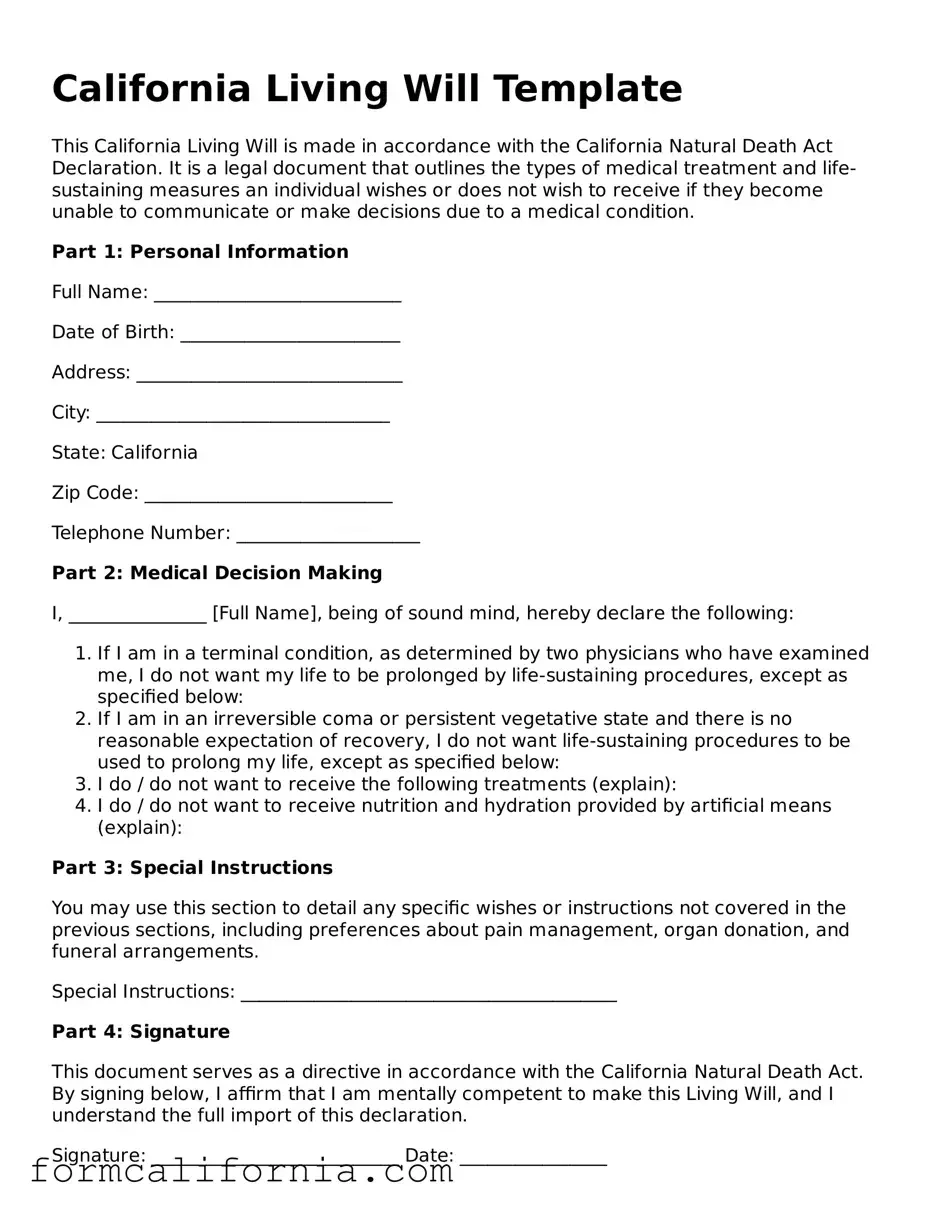California Living Will Template
This California Living Will is made in accordance with the California Natural Death Act Declaration. It is a legal document that outlines the types of medical treatment and life-sustaining measures an individual wishes or does not wish to receive if they become unable to communicate or make decisions due to a medical condition.
Part 1: Personal Information
Full Name: ___________________________
Date of Birth: ________________________
Address: _____________________________
City: ________________________________
State: California
Zip Code: ___________________________
Telephone Number: ____________________
Part 2: Medical Decision Making
I, _______________ [Full Name], being of sound mind, hereby declare the following:
- If I am in a terminal condition, as determined by two physicians who have examined me, I do not want my life to be prolonged by life-sustaining procedures, except as specified below:
- If I am in an irreversible coma or persistent vegetative state and there is no reasonable expectation of recovery, I do not want life-sustaining procedures to be used to prolong my life, except as specified below:
- I do / do not want to receive the following treatments (explain):
- I do / do not want to receive nutrition and hydration provided by artificial means (explain):
Part 3: Special Instructions
You may use this section to detail any specific wishes or instructions not covered in the previous sections, including preferences about pain management, organ donation, and funeral arrangements.
Special Instructions: _________________________________________
Part 4: Signature
This document serves as a directive in accordance with the California Natural Death Act. By signing below, I affirm that I am mentally competent to make this Living Will, and I understand the full import of this declaration.
Signature: ___________________________ Date: ________________
Printed Name: ________________________
Part 5: Witnesses
This Living Will must be signed in the presence of two witnesses, neither of whom may be a health care provider involved in the direct care of the declarant, any relative by blood or marriage, or any person entitled to any portion of the estate upon death.
Witness 1 Signature: ___________________ Date: ________________
Witness 1 Printed Name: _________________
Witness 2 Signature: ___________________ Date: ________________
Witness 2 Printed Name: _________________
